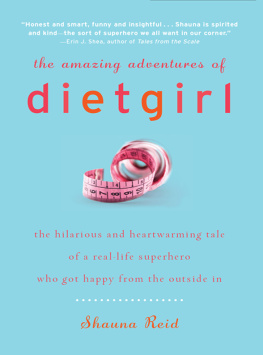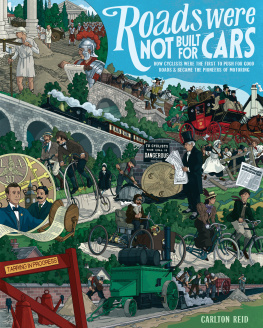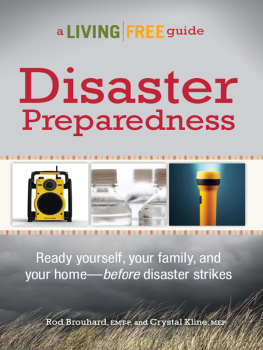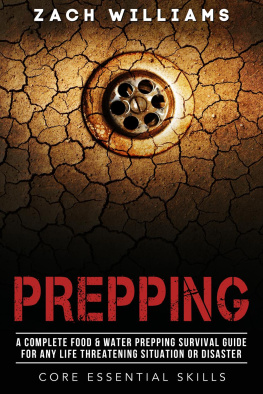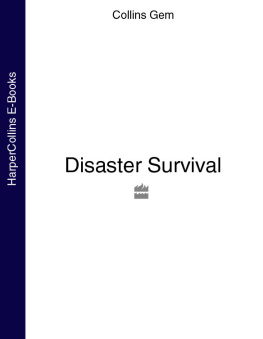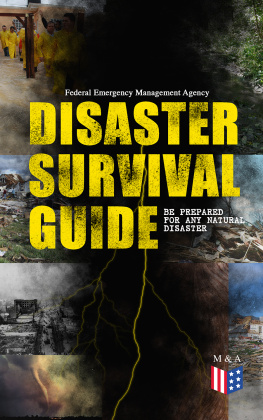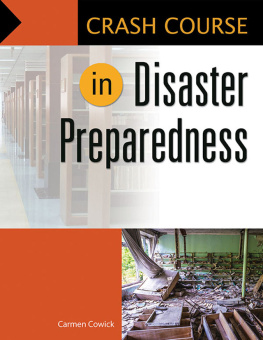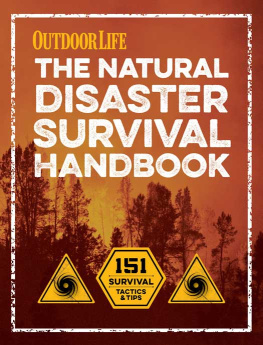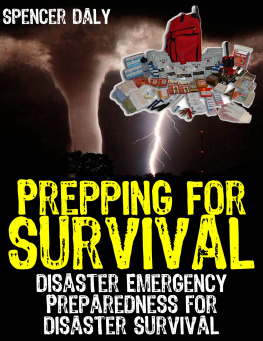William Reid
Practical Home Preparedness
A simple step-by-step guide to creating a disaster-ready home.
Copyright 2022 by William Reid
All rights reserved. No part of this publication may be reproduced, stored or transmitted in any form or by any means, electronic, mechanical, photocopying, recording, scanning, or otherwise without written permission from the publisher. It is illegal to copy this book, post it to a website, or distribute it by any other means without permission.
William Reid asserts the moral right to be identified as the author of this work.
William Reid has no responsibility for the persistence or accuracy of URLs for external or third-party Internet Websites referred to in this publication and does not guarantee that any content on such Websites is, or will remain, accurate or appropriate.
Designations used by companies to distinguish their products are often claimed as trademarks. All brand names and product names used in this book and on its cover are trade names, service marks, trademarks and registered trademarks of their respective owners. The publishers and the book are not associated with any product or vendor mentioned in this book. None of the companies referenced within the book have endorsed the book.
First edition
This book was professionally typeset on Reedsy
Find out more at reedsy.com
By failing to prepare, you are preparing to fail.
Benjamin Franklin
Contents
W hen you read the word prepper, what images come to mind? Do you imagine a person fully decked out in camouflage or tactical gear, wielding military weapons? Do you imagine a doomsday bunker deep underground with endless supplies to survive a zombie apocalypse? Or do you imagine an off-grid homestead out in the hills of Montana with a giant garden, chicken coops, and solar panel? Such images are what we have come to be familiar with thanks to recent media and reality television. And unfortunately, despite the entertainment these characterizations have provided, these stereotypes have done us a disservice. Because in reality you might not know a prepper if you saw them. Your neighbor, spin class partner, or favorite barista could all be preppers. From my perspective, a prepper is someone who has gathered materials and made plans to make sure that themselves, their family, and their household are prepared to provide for their own basic needs in the event of a disaster, natural or man-made . Once upon a time, prepping like this was commonplace. Before globalization and modern supply chains and agriculture, the typical household didnt know if they could count on grocery store shelves to be stocked, if clean water would be available, or what the next months weather might bring. They made practical preparations to get through hard times, because hard times were expected. I am grateful for all of the conveniences and products and services that we have today, but it has caused us to take for granted the basic necessities of life. Honest prepping begins with the realization that at some point, even for a short time, some of those necessities might not be available, and it means taking responsibility to make sure that you can provide those things for yourself.
The last several years have provided example after example of the reasons for everyday people across the world to make simple preparations. The ongoing war in Ukraine, Hurricane Ian, social unrest and violence in U.S. cities, and most notably the COVID-19 pandemic have all reminded us that disasters - both natural and man-made - can disrupt society and our lives in unexpected ways. As climate change continues to cause extreme weather, wealth disparity in developed nations widens, and a middle class in developing nations rises, we can anticipate increasing global volatility.
Thanks to reality TV and the doomsday, apocalyptic, SHTF scenarios that sell books, many so-called preppers have fallen into the trap of thinking to prepare for a specific disastrous scenario. Enter the search term prepping for online books, and youll find many titles focused on such cataclysmic events as nuclear war, an electromagnetic pulse (EMP) strike, or even civil war. While pondering these scenarios may inform some decisions, they also set an unrealistic expectation for the beginning prepper trying to get started. Even after being familiar with the prepping world for over a decade, Im not willing to pay the cost to obtain and maintain the skills and supplies for such a cataclysm. But thats not my goal, and its not the goal of this book to help you prepare for that. The goal of this book is to help the average person be prepared to shelter in place in their own home for up to two weeks in the case of an unexpected disaster. Why two weeks, you might ask? Well, that choice is somewhat arbitrary. But from my observation of human behavior, natural disasters, and the typical response to those natural disasters, two weeks is sufficient time for a coordinated response and rescue effort to be made, depending on the magnitude of the disaster. In order to get a better understanding of this, it is helpful to understand what I call the likelihood-severity spectrum, and what it means for how we prepare. On one end of the spectrum, we have events that have a high likelihood, but a low severity. If you live in the midwest of the United States, a snowstorm that makes driving dangerous is such an example. Its likely to occur at least once a year, but in most places roads will be usable again in a couple days and life will go on as normal. On the other end of the spectrum, imagine a nuclear war. Its been nearly a century since the last atomic weapons were used in warfare, but if it were to happen on your nations soil, the impact would be catastrophic.

Another way to think about this is that the more likely (less severe) events tend to be more localized when compared to the less likely (more severe) events. And of course, there are all sorts of events that occur along the spectrum. Pop culture has convinced us that prepping means preparing for high severity events. What I want to help you with is preparing for more of the events that are closer to the less severe end of the spectrum, which will inherently provide you a foundation to prepare for higher severity events.
A Basic Needs-Oriented Approach
In order to begin your preparations, we are going to consider these basic human physical needs:
- Water
- Food
- Heating & Cooking
- Sanitation & Health
Instead of focusing on different scenarios, I am going to help you answer this important question: How can I, under any circumstance, make sure that I have all of my homes physical needs taken care of? Ive found that this approach will help ensure preparedness for most scenarios that I can foresee, as well as those that I cant. For example, I could lose heat in my home due to any number of reasons - mechanical furnace failure, electrical outage, or natural gas outage. But if Ive taken steps to ensure that I have emergency heating available, then Im prepared for any one of those more specific situations.
In the next chapter, I will share a Buy This Now list. For the busy person wanting to waste no time, these are no-brainer items to ensure preparedness, and we will break down the reasoning for those items throughout the book.
In each of the following chapters, we will take a close look at each one of these basic needs, and in some cases provide a Good , Better , and Best recommendations for how you can prepare to meet those needs for yourself for two weeks. The
Next page

